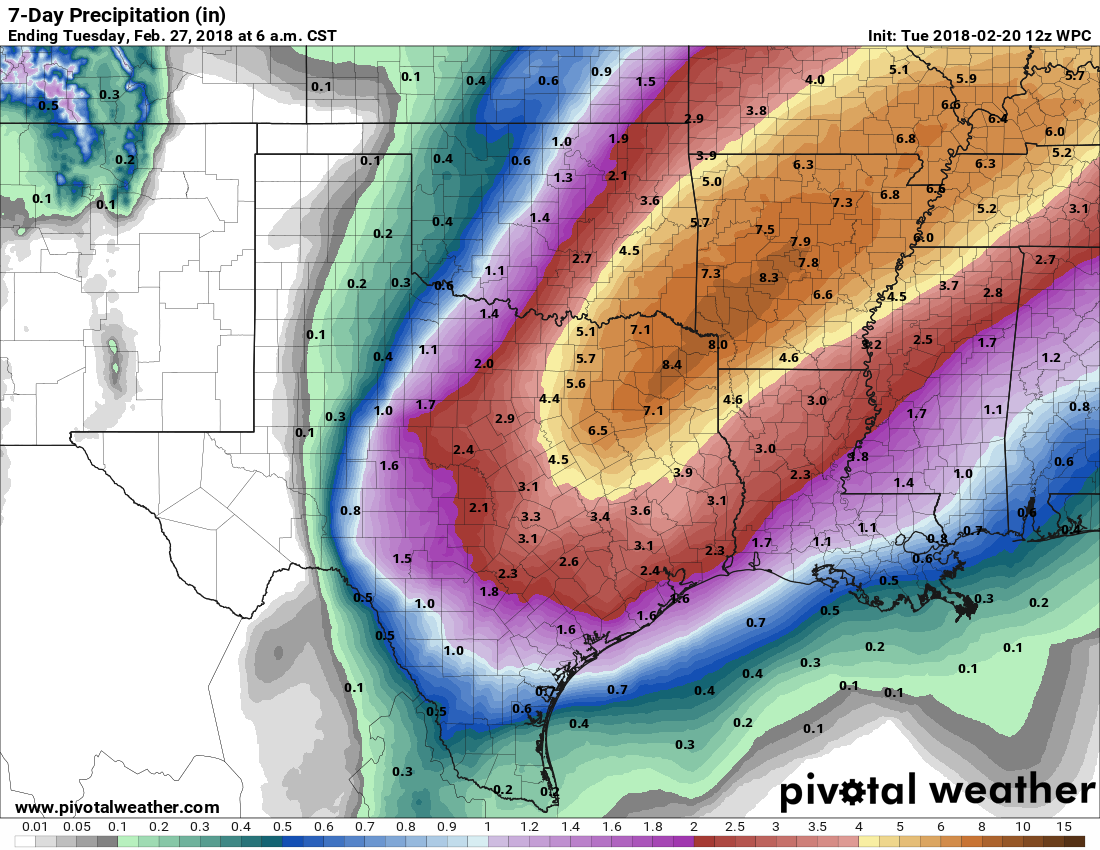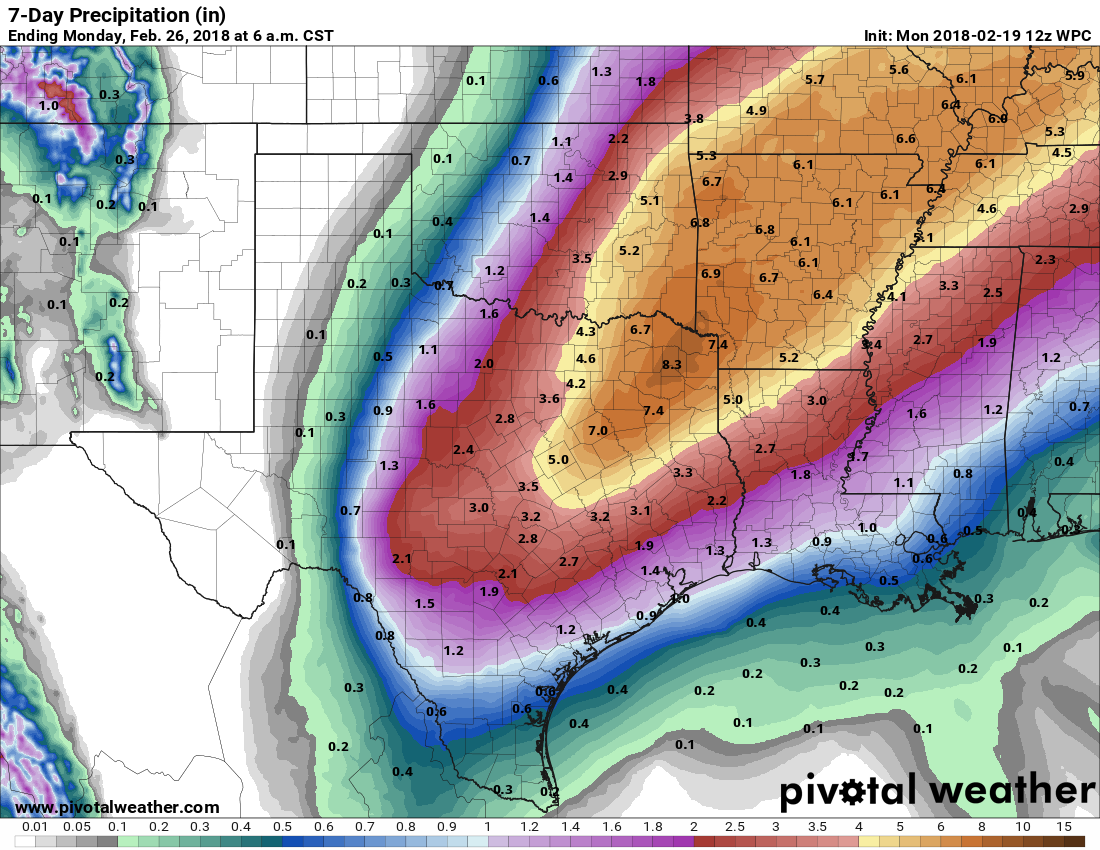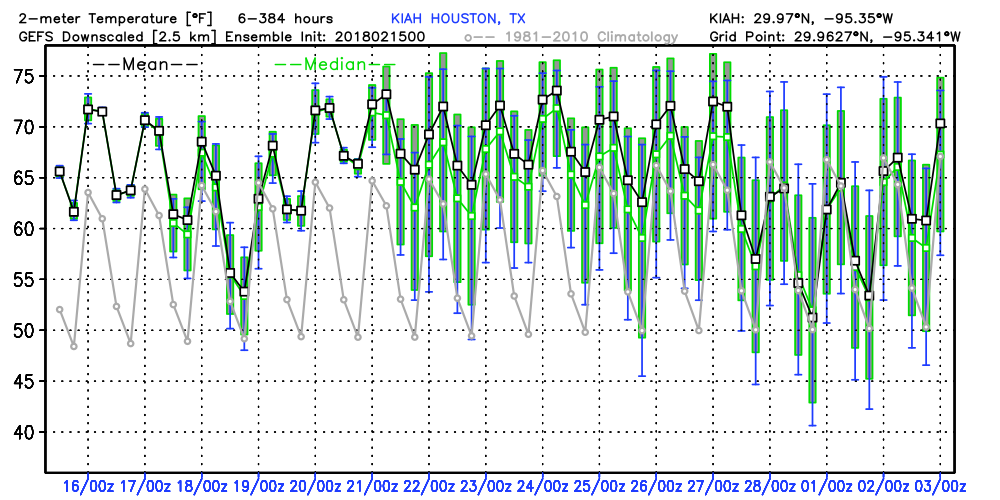A round of thunderstorms moved through Houston during the overnight hours, dropping as much as 2 inches of rainfall for some areas pretty quickly, but now the Houston region is seeing a break that should hold through at least sunrise and probably the morning commute.
Wednesday
The cold front that’s helping to drive these showers (along with some kinks in the atmosphere moving northward into the region) isn’t going away, so there’s the potential for redevelopment of heavy rain later this morning and throughout the day. To that end, the National Weather Service has issued a Flash Flood Watch through 3pm this afternoon for most of the region, excepting the coast.

With that said, I don’t things will get too bad today, and probably at most we are looking at the potential for some short-lived street flooding during heavier downpours. Bottom line—check the radar before heading out for any trips beyond the local grocery store. The front should eventually make its way through most of Houston, leading to a somewhat cooler night in the 50s for most of the area except for probably along the coast.



